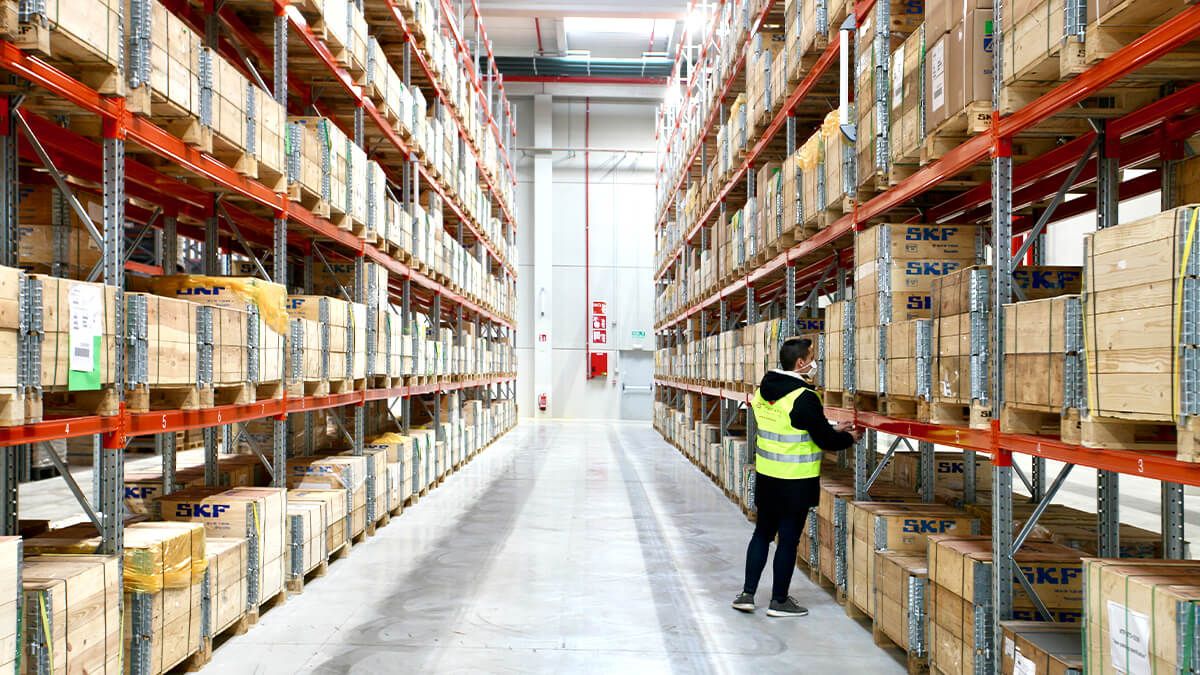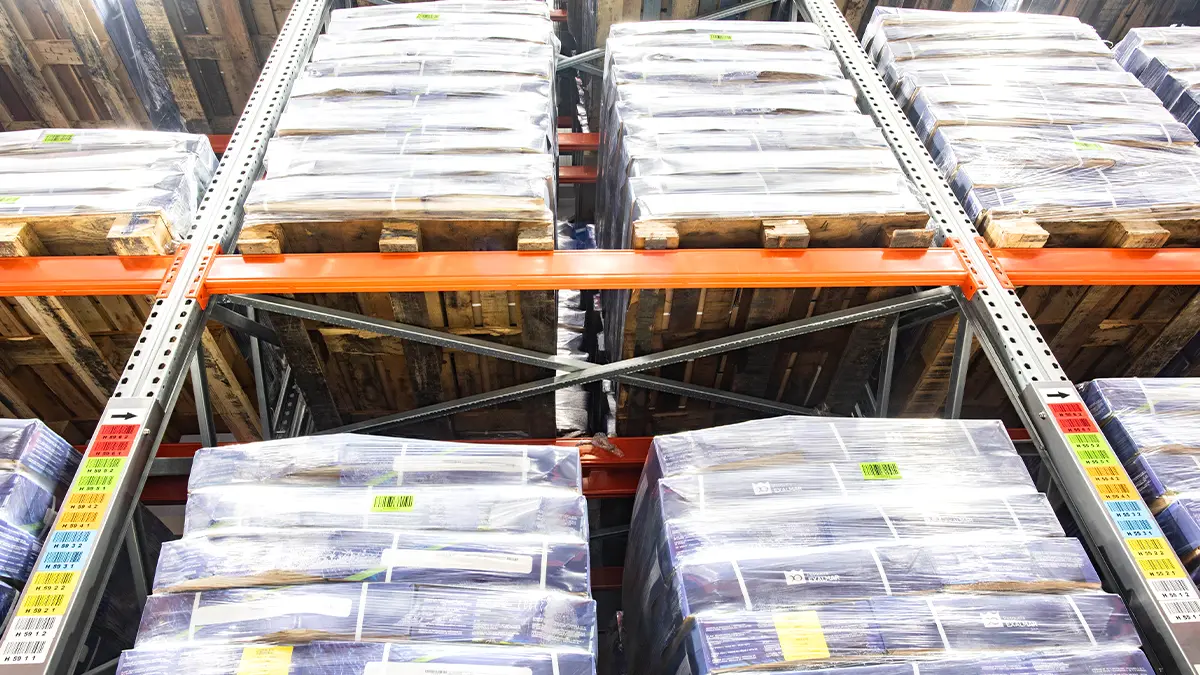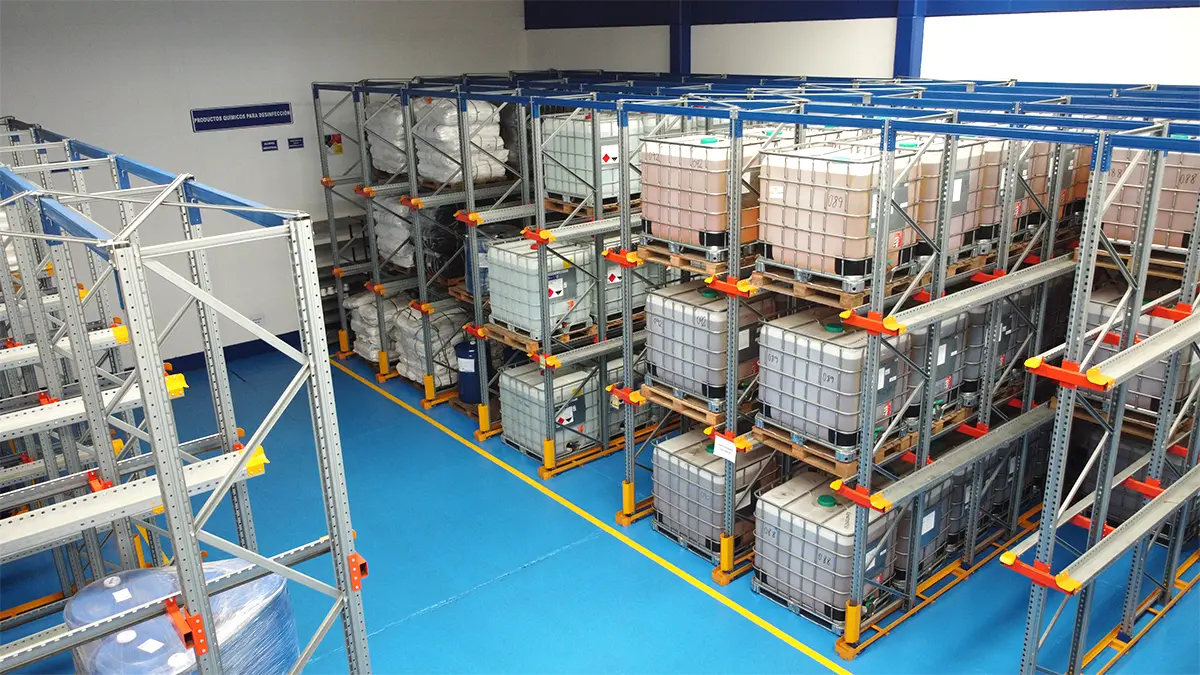Selective storage systems are those whose characteristics make direct access to the unit loads stored in them possible. As a result, in selective storage any goods stored on the racking can be selected and unloaded directly.
Selective storage systems are the most commonly used type of solution in warehouses and distribution centres, being an adjustable pallet racking system. However, their main advantages and some of their limitations or drawbacks should also be considered.
As with any storage system, there is no perfect solution for all warehouses. The most appropriate type of industrial racking will depend on the needs of each company.
Advantages of Selective Storage
The main advantages of the systems that allow selective storage are:
Load selectivity
As its very name indicates, selectivity or direct access to each unit load is one of its main advantages. This is particularly important in companies that store a high number of different products or references and which require regular handling.
Fast and simple loading and unloading
By having direct access to the unit loads, in selective storage the loading and unloading process by the handling equipment is faster and simpler than in compact storage systems, in which the operator must handle the load in more complex situations and which require greater precision. Also, it won’t be necessary to handle unit loads other than the one we want to access.
Easy adaptation and distribution of the goods
Selective storage systems are perfectly adaptable to unit loads of different sizes and weights, and also facilitate and an orderly distribution of goods.
Economical systems
Compared to compact automatic systems, selective storage systems are more economical and have a lower initial cost. Being more conventional systems and with a simpler structure, generally their design and installation are cheaper, so if the warehouse has sufficient space, they are normally systems that facilitate warehouse profitability.
Possibility of compaction
Compaction is also possible in selective systems, although not to the levels of systems such as Drive In racking or FIFO live storage and LIFO systems. To maintain total selectivity of the unit loads, compaction must be produced with the narrowing of the work aisles of the forklift. These characteristics are used to design the very narrow aisle (VNA) systems, which are operated by special forklifts in order to move along these narrower aisles.
There are also hybrid systems that do not allow total selectivity of the unit loads, but which do offer greater compaction, such as the double deep pallet or mobile pallet racking systems.
Combinable with other storage systems
The versatility of the different types of selective racking solutions makes them perfectly combinable with other storage systems, generally picking solutions at their lower levels.
It is very common to install longspan shelving or carton flow rack systems at the lower levels of selective solutions. This combination makes it possible to use those low-level spaces to store manual products in the warehouse, and all the available space at height is exploited for the selective system of pallets.
Easy and simple stock control
By reserving each available storage space for a single unit load, and a product reference, inventory control is much simpler and can be checked at a glance.
However, in compact storage systems, there is an added difficulty with stock management.

Disadvantages or drawbacks of selective racking
In contrast to the advantages indicated above, selective storage systems have some limitations to consider before deciding if they are the right system for a warehouse.
Need for more available space
Requiring more available space in the warehouse is perhaps the main limitation of selective storage. If a warehouse has reduced space for its storage needs, selective systems won’t be the best option.
As a work aisle will be required for each racking structure, the efficiency of the space will be limited.
Designed for a low or medium volume of goods
As a general rule, selective storage systems are designed for companies whose warehouses are going to have in stock a low or medium volume of goods with a high rotation. It is a characteristic to bear in mind for companies with a high number and volume of unit loads, as an increased storage cost could be incurred.
High storage cost per square metre
Despite being more economical in their design and installation, their storage costs per square metre are ultimately higher, because they are not compact and require more space to store the same unit loads.
Common applications of selective storage
With its clearly defined advantages and disadvantages, selective storage can be applied in warehouses with the following characteristics or needs:
- Companies that need to store a multitude of different product references.
- Companies or warehouses that need to directly access all the unit loads of their goods.
- Companies whose goods are not homogeneous and that have a high rotation.
- Companies that store products with special and unconventional characteristics, such as spools, drums or containers.
- Companies that combine storage of heavy loads (pallets) and medium or light loads (picking).

Types of Selective Storage Systems
We analyse below the differences between the different types of systems that allow selective storage, mainly adjustable pallet selective racking and VNA.
We will then outline 2 storage systems that cannot be considered completely selective, namely the double deep pallet and mobile pallet racking systems.
Adjustable Pallet Racking
Adjustable pallet racking is the most traditional selective storage system.
It consists of a simple structure made up of frames and beams, and is designed to store unit loads mechanically using forklifts. The forklifts access the pallets from work aisles that run in parallel to each row of racking. Selectivity or direct access to the unit loads is total.
VNA (Very Narrow Aisle) Racking
VNA (Very Narrow Aisle) Racking is simply an adaptation of the adjustable pallet racking system in which the work aisles along which the forklifts pass are significantly narrowed.
Special VNA forklifts, occasionally wire-guided for greater safety, are used. Thanks to this narrowing of the work aisles, the selectivity of all the pallets is maintained, but space optimisation of up to 40% can be achieved.
Double Deep Pallet Racking
Double Deep Pallet Racking is also an adaptation of the adjustable pallet racking system, but in this case it cannot be considered a fully selective system.
A similar structure to adjustable pallet racking is designed, but it allows pallet storage at 2 depths, so storage density is increased, but direct access to all the unit loads is lost.
Mobile Pallet Racking
In Mobile Pallet Racking a structure with a similar base to adjustable pallet racking is designed, but here the structure is mounted on mobile bases that allow the racking blocks to be moved in 2 directions.
A high-density compact structure is therefore generated and only the work aisle in which we want to operate and access the load is open.
As in the above case, it cannot be considered a selective system either because it is only possible to access the unit loads of the aisle selected to be opened. However, access to all the pallets in the open aisle is direct and immediate, so it is considered a hybrid solution between a selective system and a compact system that is very useful in some warehouses, generally with cold or freezing conditions storage requirements.




